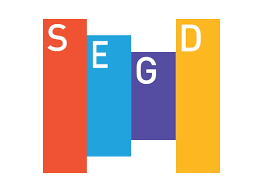ARCHIVE: Category Archive for: Sign Types
Another Way To Improve Signage ROI – Add Quality and Features!
Any business is inherently interested in knowing the return on investment (ROI) for the important actions it’s considering, because doing those calculations not only makes it easier to choose among different strategies, but also helps identify which of several possible actions should be prioritized and which ones are better delayed. With signage, you can do two varieties of ROI calculations: ROI in comparison with other advertising expenditures Pure financial ROI in comparison with any type of expenditures If you haven’t already, by the way, you can check out your signage ROI with our unique Business Sign R.O.I. Calculator. Either way, you’ll find that the cost of signage is relatively small compared to all the other expenditures you are making to
News From the World of Signage

News From the World of Signage Vintage Neon Signs Convey An ‘Old-Time’ Feel From the early 1920s to the late 1960s, neon signs were – if not “the bee’s knees” – at least a high-tech expression of the signage industry’s latest and greatest. In the intervening years, new technologies (up to and including color LEDs) have made neon signs look dated, which is enough not only for designers to start re-using that technology to evoke an “old style” look, but for collectors to move in and devote themselves to acquiring, preserving, and displaying the neon arts. One such effort is a current exhibition at the Castle in downtown Appleton, WI. The exhibition, aptly titled: “Neon: Darkness Electrified,” opened last month
Two Recent Projects Requiring Pylon Signs, Awnings, and Tenant Directories
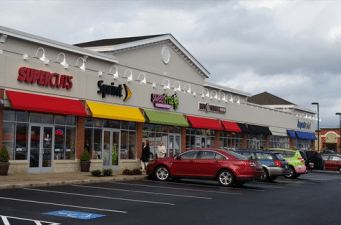
Adams Plaza, Quincy, MA Kimco Realty views Black Friday as an opportunity to refresh the aging pylon sign at Adams Plaza in Quincy, to improve visibility for their tenants, as well as to draw in extra curiosity and traffic! Here, on the right, is the “before” photo. Compare it to the new and improved “after” version, shown here on the left. A more modern look, more substantial-looking pylons, and improved interior elements give the Adams Plaza pylon sign — and the tenants it advertises — a whole new lease on life. Project completed on time, to specifications, on budget. Thanks for the opportunity to serve. Hadley Corner, Hadley, MA Tenants are now moving in at Hadley Corner! Metro
Fascinating Details You May Not Know About Blade Signage
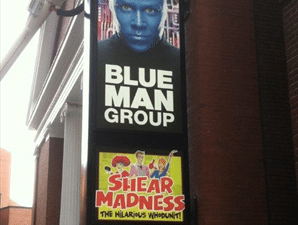
Drive or walk along a commercial thoroughfare and you’ll notice that most of the signs – mounted flush on the fronts of the buildings – are extremely difficult to see from anywhere but directly in front of each shop. That’s not good for business. To improve visibility in these situations, one of the best technologies the signage industry has developed is the so-called “blade” sign. The name describes any sign that extends directly out from the surface of a structure – usually perpendicular to a building’s wall – and thereby presents its full face to all the traffic moving along the side of the building (see accompanying photo). Under most conditions, blade signs can be two-sided, effectively attracting attention from
East Pier 7 Opens With Political Fanfare
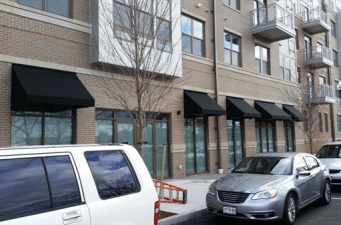
Massachusetts Governor Deval Patrick and Boston Mayor Martin Walsh are scheduled to be on hand today, November 12, 2014, for the grand opening of East Pier 7 – a new residential development along Boston’s famed and scenic waterfront. In addition to their stunning views, the apartments now available on East Pier 7 include amenities such as: close proximity to the MBTA’s Blue Line, on-site parking, public access to the waterfront, and landscaped open spaces. There’s even talk of water taxi service. Although the neighborhood has been on the upswing for at least two decades (many residents date the turnaround from the opening of Piers Park back in 1995), this project has been on the drawing boards for only the last
Inside Metro Signs – John McNally, Lead Fabricator
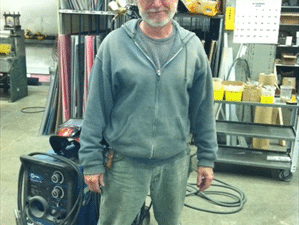
Inside Metro Signs – John McNally, Lead Fabricator It’s just another day at the factory for John McNally, the lead fabricator and working foreman in Metro Sign and Awning’s fabrication shop. It usually starts with an intense look at one of the sketches the design department hands off to him when they give the go ahead to build a new sign. “Then it’s up to me,” says John. “Basically, I have to figure out the best way to build it so it lasts.” Living in a world of square and rectangular tubing, sheet metal, and various kinds of clear and translucent plastic, John keeps busy using band saws, radial arm saws, welding equipment and very high bonding adhesives to slice
Complying with the Americans with Disabilities Act
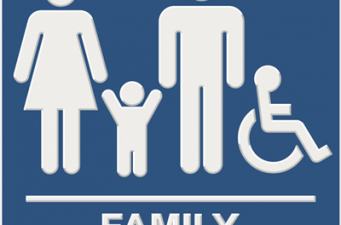
The Americans with Disabilities Act (ADA), which first became the law of the land in 1991, has made incalculable improvements in the lives of countless people. More recently revised in 2010 and made mandatory as of March 15, 2012 for virtually all new construction and renovations, the ADA has resulted in a system of “best practices” that make it possible for disabled persons to access and enjoy an extremely wide range of public and private built environments. Many people think the ADA just requires Braille on certain signs, but it’s considerably more comprehensive than that. Compliance can impact a great many of your project’s signage (and design/construction) specifications. Unfortunately, the ADA’s requirements are sometimes ambiguous. That’s one reason Metro Sign
Secrets of Pylon Signage
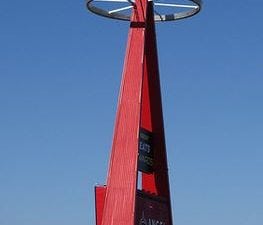
It’s hard to drive or walk far in today’s built-up areas without encountering a pylon sign, sometimes called a pole sign or a roadside sign. As the name implies, this is single- or double-sided signage supported above ground level on some kind of slim vertical support. Along highways, pylon signage can tower 200 feet or even higher. In urban areas, they’re likely to top out at 30 feet or so, the better to be visible to foot traffic and to link the sign’s messaging more closely to a particular piece of real estate. The pylon sign itself usually consists of an illuminated sign cabinet supported by one or two unembellished poles, which may be square, round, or of an interesting
Interesting Developments in Signage
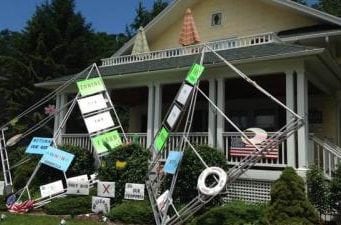
OK. We admit it: we love signs and signage. It’s fascinating. We can’t get enough. And we love to learn more about technology, industry developments, and basically anything that has anything to do with signs. That’s why we’re fascinated by the following stories (and we hope you are too): “Judge Rules … Signage Rules … Unconstitutional” It’s far away, but Saugutuck, MI, is the location where a county judge recently decided that restrictions on signage are unconstitutional! Basically, a couple of homeowners posted signs declaring their opinions on a very large number of matters (see accompanying photo). Neighbors objected, and the case found its way to court. The result? Now there’s a new precedent that gives property owners virtually unlimited
Lightweight Monument Signs

Monument signs have a great look: solid, substantial, historic, even permanent. Such three-dimension constructions have a long history, having been made for generations from stone, earth, and other long-lasting materials, and more recently from semi-permanent materials such as concrete, stucco, and brick. But you’d be surprised to learn how easily we can achieve that look with lightweight, low-cost materials and processes. Today, monument signs can be fabricated “to order” from man-made materials that give that permanent look while being lighter, easier, and cheaper to fabricate, transport, and install. Modern Materials; Venerable Look These modern monuments often begin with a solid core of molded expanded polystyrene or something similar, bonded onto one or more vertical PVC pipes that will later provide
Categories
- ADA
- Architectural Signage
- Awnings and Canopies
- Branding
- Colleges and Universities
- Community
- COVID-19
- Curated Content
- Customer Spotlight
- Customers
- Deep
- Design/Build
- Digest
- Digital Signage
- Eco-Signage
- Electronic Message Centers (EMC)
- Enclosures
- Exterior Signage
- Fabrication
- Freestanding Signs
- Fun
- Functional Signage
- Green
- How Much Does a Sign Cost
- Industries
- Inside Metro
- Interior Signage
- Legacy
- Legacy-EA 2.0
- Metro Sign
- Metro Sign & Awning
- New England Signs
- Newsletters
- Original Posts
- Others
- Partners-Developers-Contractors
- Professional Signage Installation
- Publications
- Residential Signage
- Sign Design
- Sign Renovation
- Sign Types
- Sign Warranty
- Signage Regulations
- Signage ROI
- Signage Tips
- Vehicle Wrap
- Wayfinding
- Window and Door Graphics
Recent Posts
Tags
Copyright 2022 MetroSign and Awning, All rights reserved | Privacy Statement | Terms of Use
